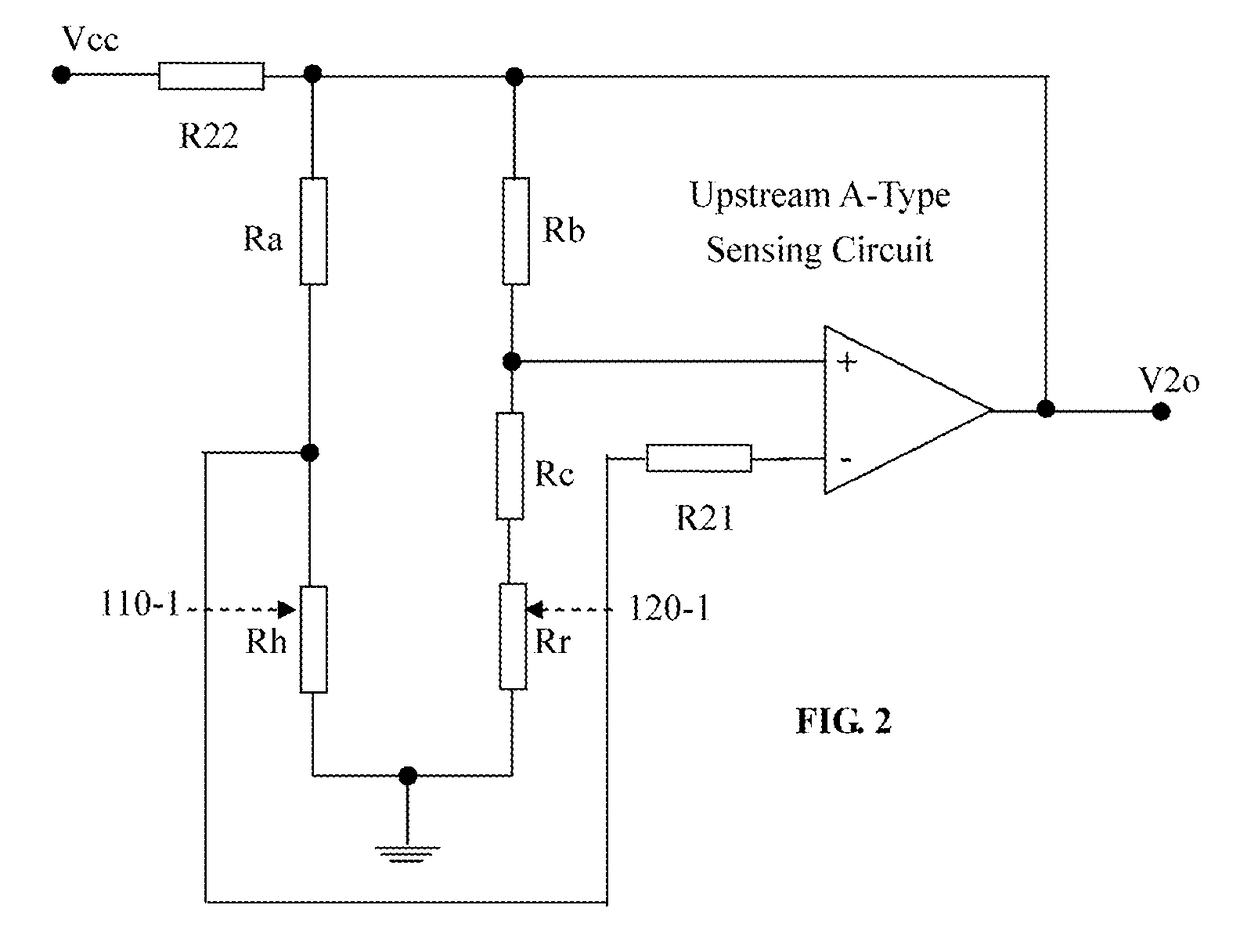Integrated micromachined thermal mass flow sensor and methods of making the same
a micro-machined, sensor technology, applied in the direction of volume/mass flow by differential pressure, liquid/fluent solid measurement, instruments, etc., can solve the problems of high manufacturing cost of identical sensors, inaccurateness, and difficulty in measuring flows above a certain flow velocity, and achieve good thermal isolation and high sensitivity
- Summary
- Abstract
- Description
- Claims
- Application Information
AI Technical Summary
Benefits of technology
Problems solved by technology
Method used
Image
Examples
Embodiment Construction
[0023]FIG. 1 shows a top view of a flow rate sensor 100 as a preferred embodiment of the present sensor. The flow rate sensor 100 is supported on a membrane 105 and is manufactured by applying the MEMS manufacturing processes as illustrated below. The flow rate sensor includes an upstream heater 110-1 and a downstream heater 110-2 as well as two temperature sensing resistors 115-1 and 115-2 disposed on the upstream and downstream respectively of the heaters 110-1 and 110-2. Each of the heaters 110-1 and 110-2 is a thin-film heating element and the temperature sensing resistors 115-1 and 115-2 is a pair of thin-film sensing resistors on a thin thermally isolated membrane 105 disposed over a micro-machined silicon substrate. The upstream and downstream sensing resistors 115-1 and 115-2 respectively may be symmetrical, i.e., resistors of equal resistance, or non-symmetrical resistors, i.e., resistors of different resistances. The upstream and downstream sensing resistors may be arrange...
PUM
 Login to View More
Login to View More Abstract
Description
Claims
Application Information
 Login to View More
Login to View More - R&D
- Intellectual Property
- Life Sciences
- Materials
- Tech Scout
- Unparalleled Data Quality
- Higher Quality Content
- 60% Fewer Hallucinations
Browse by: Latest US Patents, China's latest patents, Technical Efficacy Thesaurus, Application Domain, Technology Topic, Popular Technical Reports.
© 2025 PatSnap. All rights reserved.Legal|Privacy policy|Modern Slavery Act Transparency Statement|Sitemap|About US| Contact US: help@patsnap.com



